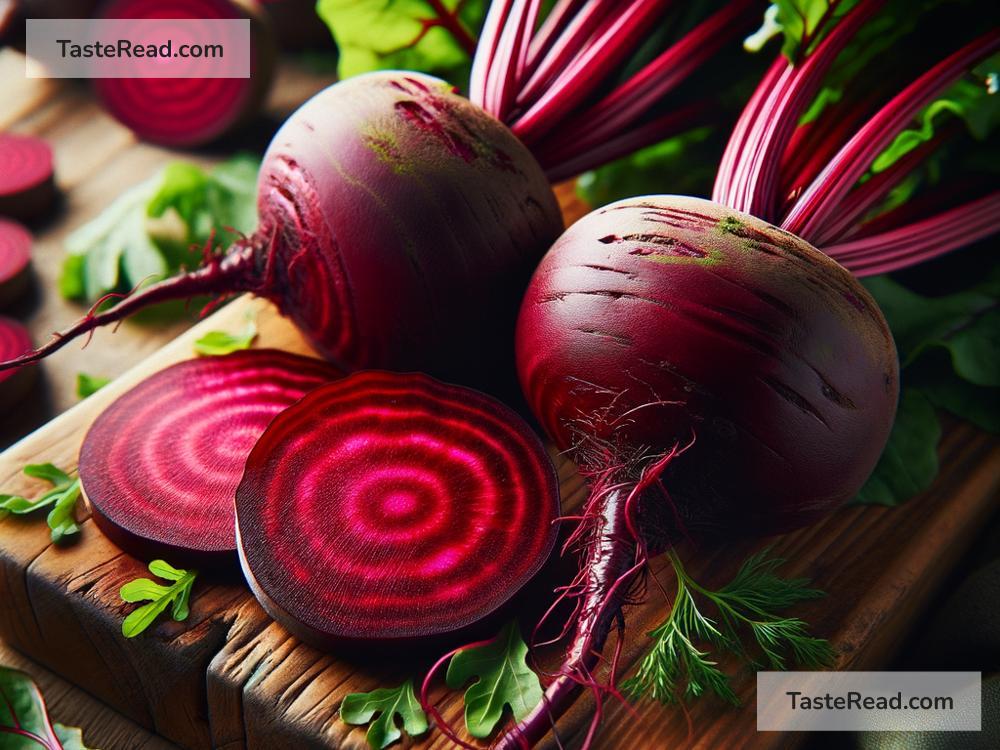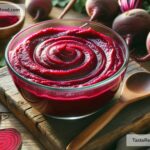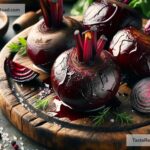Why Beets Are So Vibrant in Color
Have you ever wondered why beets are so brightly colored? These root vegetables have a stunning deep red or purple shade that makes them one of the most eye-catching foods in the market. Whether roasted, juiced, or sliced into a salad, beets brighten up any dish with their bold appearance. But there’s more to their vibrant color than meets the eye — it all comes down to chemistry and nature. In this blog, we’ll explore why beets are so colorful and why their shade is important for both the plant and us humans who enjoy them.
What Makes Beets So Colorful?
The secret to the beet’s vibrant color lies in pigments called betalains. Betalains are natural compounds that give beets their signature shades of red, purple, and even Yellow (in golden beets). These pigments are water-soluble, meaning they dissolve in water, which is why beet juice stains everything it touches.
Betalains are a unique type of pigment because they aren’t found in many plants. Most other colorful fruits and vegetables, like carrots or tomatoes, get their hues from pigments like carotenoids or anthocyanins. Beets are special because their colors come entirely from betalains.
Why Do Beets Have Betalains?
Plants develop pigments for practical reasons, not just aesthetics. In the case of beets, betalains serve two main purposes:
-
Attracting Pollinators:
In wild beet plants, the bright color of their flowers helps attract pollinators like bees. Pollinators are essential because they help plants reproduce by spreading pollen from flower to flower. While modern beets are cultivated mainly for their roots, the betalains evolved as a way for the plant to ensure its survival in nature. -
Protecting the Plant:
Betalains also protect beets from environmental stress. For example, they help shield the plant from harmful UV rays and extreme weather conditions. Additionally, betalains act as antioxidants, defending the plant from oxidative damage caused by free radicals. These protective qualities make betalains beneficial not just for beets but also for humans who eat them!
Why Do Some Beets Look Different?
If you’ve ever seen golden beets or candy-striped beets (known as Chioggia beets), you might be wondering why they don’t have the same dark red shade that regular beets do. The color differences are due to variations in the types and levels of betalains present in the beet.
-
Red Beets:
Red beets contain a higher concentration of betalain pigments, specifically betacyanins, which create their deep red or purple color. -
Golden Beets:
Golden beets have more of another type of betalain called betaxanthins, which gives them their yellow or golden shade. -
Candy-Striped Beets (Chioggia):
These unique varieties contain a balanced mix of both betacyanins and betaxanthins, resulting in their pretty striped pattern of red and white rings.
Why Do Beets Stain Everything?
Anyone who’s cooked with or eaten beets knows how messy they can be. Their bright color tends to stain hands, clothing, cutting boards, and countertops. This is because betalains are highly concentrated in beets and are extremely water-soluble. When the beet is sliced, juiced, or cooked, those pigments release easily and spread wherever they touch.
But don’t worry — beet stains aren’t permanent! On skin, they usually wash off with soap and water after a few scrubs. If they end up on fabric, soaking the item in cold water before washing can help remove the stain.
Why Is Beet Color Important for Nutrition?
The same betalains that give beets their color also bring health benefits to the table. Betalains are rich in antioxidants, which help protect our body’s cells from damage caused by harmful molecules called free radicals. Eating foods high in antioxidants can support a strong immune system and may reduce the risk of chronic diseases like heart disease and cancer.
Beets also contain anti-inflammatory properties, which can help lower inflammation in the body. This is especially important for people dealing with conditions like arthritis or other inflammatory illnesses.
Additionally, the vibrant pigments in beets may play a role in improving blood flow. Studies suggest that compounds found in beets — including betalains and nitrates — can relax blood vessels, leading to better circulation and lower blood pressure.
How Can You Enjoy the Vibrant Color of Beets?
One of the easiest ways to add the brightness of beets to your meals is by cooking with them. You can roast them, boil them, pickle them, or even eat them raw. Their natural sweetness makes them delicious on their own or paired with other vegetables. Beet juice is another great option for incorporating their color and health benefits into your diet.
Even their greens (the leaves at the top) are edible! Beet greens are packed with vitamins and can be added to soups, stir-fries, and salads.
Conclusion
Beets are vibrant for a reason — their beautiful color comes from unique pigments called betalains, which help protect the plant and attract attention, both from pollinators in nature and from people in the kitchen. These pigments don’t just add visual appeal; they also bring important health benefits. Whether red, yellow, or striped, beets are a natural wonder worth celebrating. So next time you see these colorful veggies, appreciate their brilliance and enjoy their beauty — and flavor!


